Exploring Beatbox: History, Techniques, and Impact
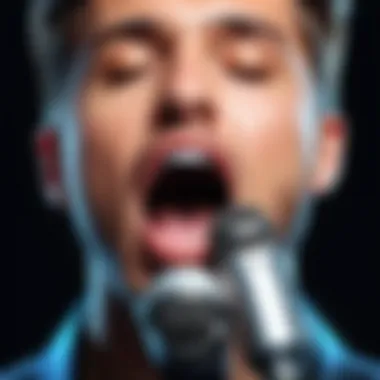
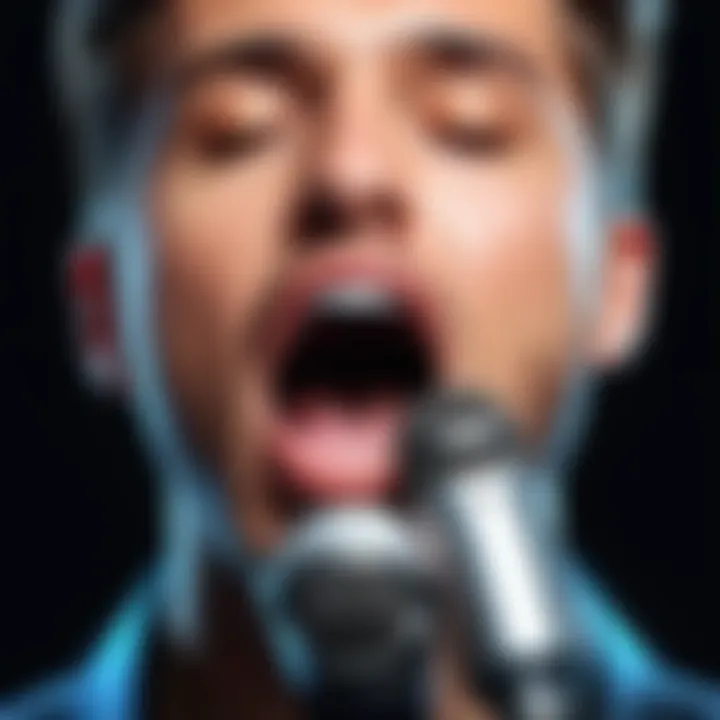
Intro
Beatboxing has cemented its place in the fabric of modern music, carving out a unique niche that bridges vocal performance and rhythmic expression. This multifaceted art form, originating from the streets and alleyways, is more than just vocal percussion; it's a personal language of sound that resonates across cultures and generations. In this exploration, we will navigate through the historical roots of beatboxing, unearth the techniques that define its practice, and consider the impact of technology on its evolution.
Understanding beatbox not only involves appreciating the foundational techniques but also recognizing the pulse of the community that supports it. From competitions that draw passionate crowds to online platforms where artists share their craft, the beatboxing scene is alive and vibrant. Whether you’re a newcomer curious about the basics or a seasoned performer looking to refine your skills, this article aims to provide a comprehensive guide that transcends the surface.
Technology Insights
Latest Tech Trends
As the world becomes increasingly digital, technology has influenced beatboxing in several groundbreaking ways. ⚡ From beatboxers using looping pedals to create polyphonic sounds to sophisticated audio editing software that allows for polished recordings, tech shapes how artists express themselves.
Moreover, the rise of social media platforms like Facebook and Reddit has provided beatboxers the ability to showcase their talents globally. You've got artists performing live on Instagram, building a following through platforms that didn’t exist a decade ago. It’s almost like a new frontier of connection, where geographic borders vanish.
Innovation in Tech
One significant innovation is the use of mobile apps designed to aid in beatboxing practice. These apps range from metronomes to sound mixers, helping artists experiment with different beats and effects right from their smartphones. The technology brings a new layer of interactivity, allowing beginners to explore beats without needing expensive equipment.
With the constant advancements in audio hardware, beatboxers now have access to microphones and soundboards that enhance their acoustic clarity immensely. Brands like Shure offer microphones tailored to vocalists that pick up the nuanced subtleties of beatboxing, ensuring that no sound gets lost in translation.
Product Reviews
In this digital age, choosing the right equipment is essential for any aspiring beatboxer. Traditional microphones like the Shure SM58 have long been favored for live performances due to their durability and clarity. However, more contemporary options like the Rode NT-USB or the Audio-Technica AT2020 also deserve recognition for their crisp audio quality and versatility in recording environments.
It's also worth mentioning loop pedals like the Boss RC-300, which can transform a solo performance into a full instrumental showcase. Many artists have shared their experiences on forums such as Reddit, exchanging tips and tricks on how to maximize these tools, thus fostering a community-driven knowledge base that benefits everyone.
"Technology is an enabler. It gets out of the way and lets the art shine through, particularly in beatboxing where the purpose is to create sounds that resonate with the audience."
The blend of traditional techniques and modern technology cultivates an environment ripe for creative exploration. As beatboxers continue to experiment with their craft, the synergy of art and technology will pave the way for new sounds that we have yet to imagine.
Preamble to Beatbox
Beatboxing is an intriguing blend of art and vocal technique, transcending traditional music forms to create something truly unique. This section serves as a foundational pillar for understanding what beatbox really is and its significance in today’s music landscape. Many people might be familiar with the rhythmic sounds produced by a beatboxer; however, there’s much more beneath the surface that deserves exploration. The importance of starting this article with an introduction to beatbox lies in laying a context that captures its evolution, cultural roots, and technical depth.
In the heart of urban spaces, beatboxing has emerged not merely as an isolated performance but as a cultural phenomenon connecting various art forms and communities. It’s vital to recognize that understanding the definition and origins enriches our appreciation of the meticulous techniques and rhythms within this vocal art. Also, let’s not underestimate the benefit of knowing its cultural context, which weaves through the very fabric of hip hop and various musical genres.
By exploring beatboxing, we delve into the realm of creativity where human voice becomes an instrument. In the upcoming sections, we will uncover how beatboxing allows for improvisation and expression, while providing a fresh perspective on musical collaboration and interaction.
Definition and Origins
To grasp the essence of beatboxing, let’s start with a clear definition. Beatboxing refers to the vocal percussion that mimics drums and other percussion instruments, executed using only the human voice. It involves a range of sounds and beats, from snare and kick to hi-hats and vocal sounds that resemble electronic instruments. While many might dismiss it as mere parlor trick, the ability to produce complex rhythms and layered sounds with the mouth is a testament to human vocal capabilities and creativity.
The origins of beatbox can be traced back to the 1980s, particularly within the hip hop scene. It was during this time that pioneers like Doug E. Fresh and Biz Markie popularized the technique, using their vocal skills to amplify the music experience. Beatboxers began to expand the auditory palette, showcasing not just beats but melody too, incorporating elements of rhythmic storytelling into their performances.
This art form is deeply rooted in a rich history that intersects with African American culture, where vocal mimicry has been a part of storytelling traditions for generations. From the rhythmic chants of ancestors to the modern performances echoing through urban streets, beatboxing represents an evolution of voice into something far more intricate and expressive.
Cultural Context
Understanding beatbox goes beyond mere definitions; it’s essential to appreciate its cultural context. As hip hop grew, so did the role of beatboxing within the genre. In the 1980s, the art of beatboxing provided a vocal alternative to the mechanized sounds of early hip hop, enriching performances and allowing artists to showcase their talents without needing elaborate musical setups.
In many urban communities, beatboxing has served as a means of communication, expression, and social commentary. It’s not just an art form but also a way to build community. Street battles and freestyle sessions encouraged creativity and collaboration, amplifying voices that might otherwise go unheard.
Furthermore, the globalization of music means that beatboxing now echoes within numerous genres, from pop to electronic. Events such as the Beatbox Battle World Championship have further solidified its significance, creating platforms for beatboxers to demonstrate their skills and unite enthusiasts worldwide.
As we continue through the article, we’ll see how beatboxing integrates with various musical elements, its ongoing evolution, and the pivotal figures who have shaped its journey. In the next steps, we'll explore the rich historical tapestry that led to the current vibrancy of this art form.
The Evolution of Beatbox
The evolution of beatbox stands as a testament to the dynamism of musical expression, showcasing how an art form can adapt and thrive across various cultural landscapes. Over the years, beatboxing has transitioned from a niche pastime to a prominent facet of contemporary music, embedding itself within numerous genres while influencing countless artists. This evolution illustrates the power of creativity in reshaping sounds and redefining boundaries, thus encouraging fresh approaches to musical artistry.
Early Beginnings
Beatboxing traces back to the late 20th century, directly influenced by African percussion traditions and vocal mimicry. Initially, this practice found its home within urban environments, where street performances often involved intricate rhythms created using just the mouth. Small gatherings and block parties across New York City served as breeding grounds for this vocal art form. Early adopters played a pivotal role by experimenting with various sounds— a pop, a clap, or even bass notes— limited only by their imagination.
It’s in these vibrant street corners and underground rhythm sessions where beatboxing began to blossom. The likes of Doug E. Fresh and Bobby McFerrin exemplified how the human voice itself could become a versatile instrument. The experimentation with sound and rhythm created a foothold for what was to come, laying down the basic frameworks of beatboxing techniques that would evolve significantly over time.
The Influence of Hip Hop
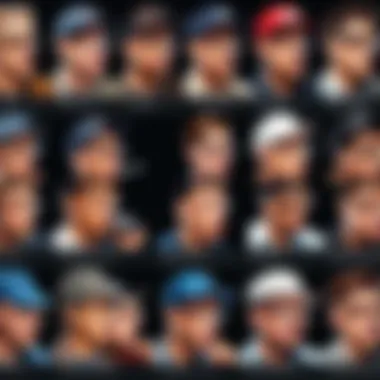
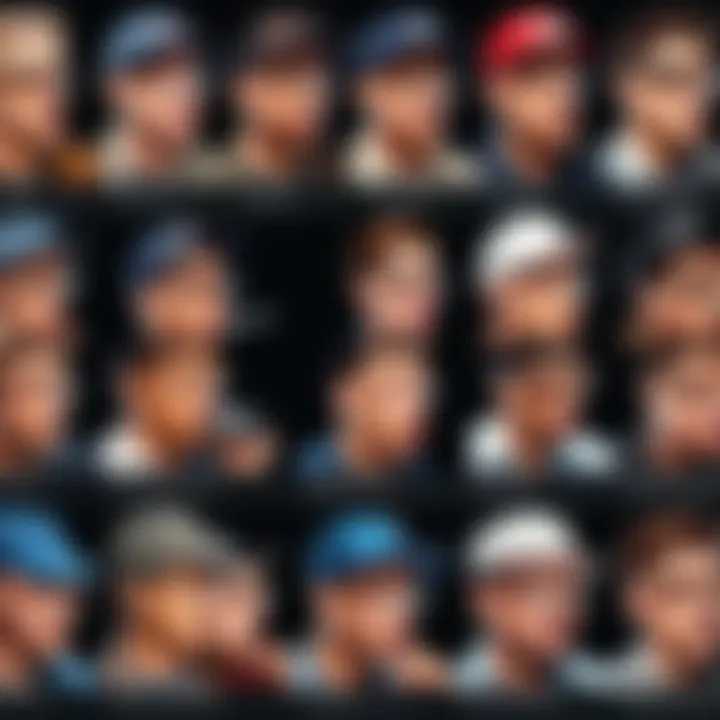
The rise of hip hop during the 1980s and 1990s solidified beatbox as an integral part of the genre. It became a crucial element in battles and performances, captivating audiences with its ability to replicate beats and sounds typically provided by instruments. Artists like Biz Markie and Rahzel showcased how beatboxing could serve as both a solo act and an accompaniment to rapping, deftly weaving the vocal rhythms into lyrical storytelling.
The collaborative nature of hip hop encouraged beatboxers to expand their repertoire. They absorbed influences from diverse musical genres, transforming beatboxing into a multifaceted art form that thrived within the creative partnerships found in hip hop culture. The rhythmic complexity achieved by combining rap and beatbox allowed for spontaneous improvisation during live performances, greatly enhancing the energy and authenticity of shows.
Modern Development
In recent years, the evolution of beatboxing has been marked by innovation and technological integration. The advent of social media platforms has provided beatboxers an unprecedented stage to share their craft. Characters like Reeps One and Tom Thum have gained immense popularity through viral videos, showcasing the infinite possibilities of vocal layered beats. This aspect has given rise to a new generation of performers who blend visual elements with auditory creativity, turning videos into engaging art forms in their own right.
Moreover, beatboxing has started to find its place in electronic music, often bridging the gap between organic vocal rhythm and synthesized sounds. Collaborations between beatboxers and electronic producers have led to creative hybrids that challenge traditional music genres. Tracks now often contain beatbox elements in pop songs, further solidifying its relevance in today’s music landscape.
"The beauty of beatboxing lies in its ability to transcend boundaries—cultural, musical, and personal. It is an invitation to play."
The evolution of beatboxing continues to unfold as new techniques emerge, influenced by the fast-changing landscape of music technology and artistic collaboration. As it finds niches in diverse musical contexts, beatboxing proves to be more than just a means to produce sound, but a crucial thread in the fabric of modern music.
Techniques in Beatboxing
When delving into the world of beatboxing, it's vital to grasp the techniques that form the backbone of this art. Mastery of techniques plays a crucial role in defining the sound and complexity of beatboxing. By understanding the mechanics behind the sounds, artists can effectively communicate rhythm and emotion, much like any other musician. This section breaks down essential elements, benefits, and deeper considerations about the techniques involved in beatboxing.
Basic Sounds
At its core, beatboxing is built on a foundation of basic sounds that every artist must learn. These include the kick drum, snare, hi-hat, and cymbals.
- Kick Drum: Simulating the deep, thumping sound of a bass drum, often made using the "B" sound with a closed lips approach.
- Snare: A crisp sound mimicking a snare drum, usually produced by a sharp "K" or "P" sound.
- Hi-hat: Frequently created by a prolonged "T" sound or by gently closing the lips while expelling air, providing the rhythmic pulse to the beats.
Practicing these sounds allows aspirants to establish their personal style. These basic sounds form the blueprint for creating complex compositions. Proper articulation and timing are the two main aspects to focus on during practice. An important tip is to record sessions and listen back, making adjustments as necessary.
Advanced Techniques
Once the foundational sounds are down pat, beatboxers can progress to advanced techniques. These elevate the performance and introduce layers of complexity. Advanced techniques include:
- Vocal Scratching: Emulating the sound of a DJ's turntable by manipulating vocal cords to produce scratch-like noises.
- Lip Rolls: Creating a bass-like sound through oscillation of the lips while vocalizing.
- Inward Sounds: Incorporating sounds made by inhaling, which can add depth and variation to a beatbox routine.
These techniques demand a combination of breath control, rhythm, and creativity. Engaging in exercises that involve alternating between different sound techniques can lead to significant improvement. It's akin to a painter layering colors; richness arises from various textures and tones. The goal is to achieve a natural flow between sounds, so they gel seamlessly during a performance.
Creating Rhythms and Patterns
Rhythm in beatboxing is akin to the heartbeat of music; it sets the pace and drives composition forward. Crafting rhythms and patterns requires not just skill but also an understanding of musicality.
- Layering Sounds: Mixing multiple basic and advanced sounds can create intricate patterns. For instance, combining a bass kick with snare hits while interspersing hi-hat variations enriches the overall texture.
- Polyrhythms: These involve two or more contrasting rhythms occurring simultaneously. Integrating such complexity engages the listener and draws them into the performance.
An effective method to practice is to start simple and gradually increase complexity. Use a metronome or backing track to stay in time and experiment with different tempos. Listening critically to existing beatboxes can also inspire creativity and spark new ideas for unique patterns.
"Each sound is a brushstroke on the canvas of rhythm, with the beatboxer as the artist creating a vivid soundscape."
In summary, the journey through techniques in beatboxing requires dedication and practice. Each level of expertise opens new avenues for creativity and expression, transforming simple vocal sounds into an extraordinary form of musical art.
Beatbox in Various Music Genres
Understanding the role of beatboxing in different musical genres opens a world of exploration into how this art form has molded, and been molded by, various sounds over the years. Dynamic in nature, beatboxing is more than just vocal percussion; it acts as a bridge within and across genres, enriching them with vocal innovativeness. From creating beats that set the tempo to layering harmonics that complement melodies, its incorporation into various music styles paints a vivid picture of creativity and cultural exchange.
Integration with Hip Hop
Hip hop and beatboxing share a synergistic relationship that dates back to the roots of hip hop itself. In the early days, beatboxers were often seen playing an essential role in live performances, providing a beat when drums were absent. Artists like Doug E. Fresh and Biz Markie were not just entertainers; they were pioneers who showcased the beatbox as a legitimate instrument. It's a key ingredient in storytelling within hip hop, where lyrical agility meets rhythmic complexity.
The ability to imitate a range of percussion sounds allows beatboxers to create entire soundscapes, making it an invaluable asset for MCs who need to perform at open mic nights or smaller venues without a full band setup. Furthermore, battle rap culture sees beatboxing as a tool for competition, enhancing lyrical duels with a live audio backdrop that sparks energy and engagement among audience members.
Contributions to Pop Music
In navigating the landscape of pop music, beatboxing has seeped into mainstream sounds, often accompanied by catchy hooks and infectious rhythms. Artists like Ed Sheeran and Pentatonix have woven beatboxing into their tracks, showcasing a blend of vocal harmonies with intricate beat patterns that resonate with fans worldwide. This integration highlights the versatility of beatboxing, turning a simple vocal rhythm into an essential component of pop anthems.
The importance of beatboxing in pop can be dissected through several lenses:
- Enhanced Melodies: It adds layers to the overall musical experience, enriching vocal lines with rhythm.
- Unique Performances: Live shows are characterized by unique sounds that keep audiences coming back for more.
- Cultural Fusion: It showcases a blend of genres, resonating with diverse audiences, and encouraging cross-pollination among artists.
Influence on Electronic Music
When examining electronic music, beatboxing surfaces as an organic counterpart to synthesizers and beats produced digitally. Its rawness offers a refreshing contrast to otherwise polished tracks, leading to a unique auditory experience. Producers often layer beatboxing tracks to create a diverse range of sounds and textures, which contributes significantly to the atmospheric depth commonly sought in electronic music.
In events and festivals, live beatboxing performances attract enthusiasts for their spontaneity and raw talent. This speaks to how beatboxing connects not only artists and genres but also fans, further solidifying its place in the electronic dance music scene.
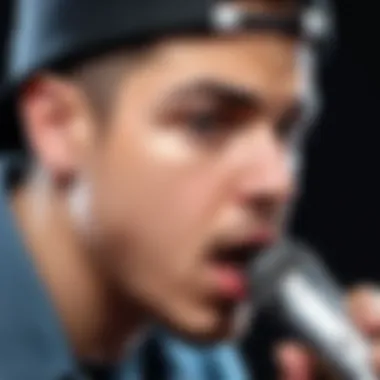

In summary, the interplay between beatboxing and various music genres reflects an evolving landscape of sound, rhythm, and culture. As beatboxing continues to break boundaries, its contribution to genres like hip hop, pop, and electronic music shapes not only the art form itself but also the wider musical universe.
Prominent Figures in Beatboxing
Understanding the landscape of beatboxing involves recognizing the key individuals who have helped shape and popularize this unique art form. The contribution of prominent figures is pivotal as they not only innovate with techniques but also act as cultural ambassadors, bringing beatboxing from the underground into mainstream awareness.
Highlighting these personalities offers insight into different styles and approaches, revealing the diversity within beatboxing. This section will explore the legacies of historical pioneers and the cutting-edge contributions of contemporary artists, illustrating how their influence evolves across generations.
Historical Pioneers
In the world of beatboxing, several figures stand out due to their foundational impact. One of the earliest and most celebrated beatboxers, Doug E. Fresh, is often referred to as the "Human Beatbox." His innovative vocal percussion techniques helped define the genre. In the late 1980s, he showcased his skills alongside rap artists, making beatboxing an integral part of hip-hop culture. Fresh's signature style combined rhythm with melody, setting a standard for future generations.
Another pioneer, Bobby McFerrin, made waves with his ability to use the voice as an orchestra. While his work spans genres, there's no denying the rhythmic complexity he brought to the singing world. His a cappella performances demonstrated how the human voice could create multiple layers of sound, something that many beatboxers draw from today.
The influence of these pioneers is still seen, echoing through various performances and recordings where their techniques have become building blocks for new artists. Their legacy is a testament to the creative possibilities inherent in beatboxing.
Contemporary Artists
As beatboxing continues to evolve, numerous contemporary artists are making remarkable strides. Among them, Reeps One stands out. Hailing from the UK, he gained fame for his jaw-dropping skills and versatility. His ability to blend beatboxing with elements of electronic music has led to collaborations with artists across genres, thus expanding the boundaries of what beatboxing can accomplish.
Another notable figure, Beardyman, is known for his focus on live-looping and improvisation. His performances often blur the lines between beatboxing, music production, and DJing, capturing the imagination of audiences worldwide. By utilizing technology, Beardyman exemplifies how modern beatboxers can innovate, showcasing a seamless meld of vocal and digital elements.
These contemporary artists, alongside others like Nfusion and Kenny Muhammad, demonstrate that the beatboxing community is vibrant and forward-thinking. Their unique contributions challenge conventions and inspire a new wave of talent, ensuring that the art form remains dynamic.
"The human voice, when exploited creatively, can transcend traditional limitations. The journey of beatboxers through time exemplifies this innovation."
Prominent figures in beatboxing not only set the stage but also ignite conversations about authenticity, creativity, and cultural significance. Through their individual journeys, they inspire others and foster a community that celebrates rhythm, sound, and expression. Thus, recognizing these figures enriches our understanding of beatboxing as an evolving art form.
The Community and Culture of Beatbox
The world of beatboxing is not just about sounds and techniques but also encompasses a vibrant community that plays a significant role in nurturing and promoting this art form. The community is where tradition meets innovation, offering a support system for aspiring beatboxers while also pushing the boundaries of creativity within the genre. As much as it is an individual expression, beatboxing thrives on shared experiences and collaborative efforts. This culture is rich with opportunities for growth, networking, and sharing knowledge.
Global Beatbox Events
Gathering enthusiasts from around the globe, beatbox events serve as a melting pot of ideas, creativity, and talent. Take, for example, the Grand Beatbox Battle, held annually in various locations around the world. This prestigious event draws not just the best beatboxers but also passionate supporters who come together to celebrate the art form. The format usually includes battles, showcases, and workshops, creating an environment that fosters both competition and camaraderie.
Events like this transform local talents into international sensations; think of Reeps One or Butterscotch, whose performances have inspired countless aspiring artists. When beatboxers gather, the energy is palpable, creating an atmosphere that resonates with creativity and passion.
Participation in these global events provides performers with valuable exposure and feedback, something that can be vital for personal growth. The interconnectedness of the community is evident as these events often culminate in collaborations, whether informal or formal, between artists from distinct backgrounds.
Additionally, these events help to demystify the craft, broadening public understanding and appreciation of beatboxing as more than just vocal percussion but an intricate form of musical expression.
Online Platforms and Collaboration
The rise of digital technology has reshaped how the beatboxing community interacts and collaborates. Platforms like YouTube and SoundCloud have become incubators for creativity, where individuals can share their beats, receive feedback, and connect with others passionate about the art. Online competitions and collaborations allow people from different corners of the globe to unite, sharing techniques and experiences.
Social media networks, particularly Facebook and Reddit, have given rise to various groups and forums dedicated to beatboxing. These spaces are ripe for discussions about techniques, performances, and tips on making one’s style unique. Participants can ask questions, seek advice, or simply share their latest creations, fostering a sense of belonging within the community. One notable platform is the Beatbox Community on Reddit, where members often discuss their journeys and share resources.
The digital landscape encourages beatboxers to experiment with innovative sounds and approaches. Collaborations via digital means have also become a norm, wherein artists can layer their sounds without ever being in the same physical location. It breaks down geographical boundaries and allows for a diverse tapestry of influences to intermingle, leading to fresh and exciting beats.
"In the world of beatboxing, it’s not just about your individual sound but how you can blend voices and styles to create something even greater."
The online world has certainly expanded the reach and understanding of beatboxing, making it a global phenomenon, encouraging more individuals to take part and express themselves in their unique ways.
Technology's Role in Beatbox
In the evolving landscape of music, technology stands as a pillar that supports and enhances artistry. In beatboxing, this influence cannot be overstated. From recording techniques that allow artists to capture their craft with utmost clarity, to the profound impact of social media allowing for greater reach and community building, technology reshapes how beatbox artists express themselves and share their work.
Recording Techniques
Recording techniques have come a long way from the days of cumbersome analog systems. Modern beatboxers often rely on digital audio workstations (DAWs) such as Ableton Live or GarageBand to record their sounds. These tools offer artists the flexibility to layer different vocal tracks, apply effects, and edit their recordings with precision. Some key facets of these recording techniques include:
- Microphones: Investing in a high-quality microphone can make a world of difference in capturing the nuances of beatboxing. Dynamic microphones like the Shure SM58 are popular due to their durability and ability to handle high sound pressure levels.
- Loop Stations: These devices allow artists to record a sound and then loop it, creating rhythmic patterns in real time. This means that a beatboxer can create an entire song using their voice alone, layering sounds and beats without needing a full band.
- Effects Processing: With software, beatboxers have the ability to manipulate their sounds further. Reverb, delay, distortion, and pitch modulation can all be applied to enhance the aural experience.
This fusion of hardware and software creates an immersive environment where a beatboxer’s voice can transform into a complex composition, blending seamlessly with various music genres.
Influence of Social Media
Social media platforms have revolutionized the way beatboxers connect with fans and other artists alike. In a world where everything is just a tap away, platforms such as YouTube, Instagram, and TikTok serve as stages for artists to showcase their skills. The implications of social media in beatboxing include:
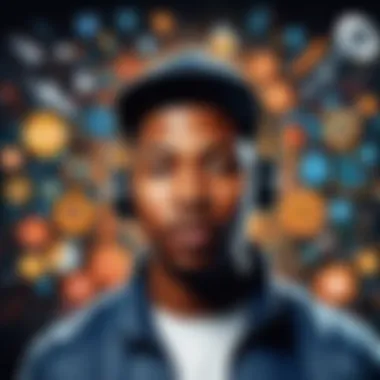

- Global Exposure: An artist can reach audiences around the world instantly. Beatboxers from different cultural backgrounds share their unique styles, fostering a rich tapestry of creativity.
- Collaborations: Online platforms enable artists to collaborate across geographies. Beatbox battles, remixes, and collaborative performances are easily organized, breaking down barriers that once limited artistic partnerships.
- Community Building: Social media fosters a sense of belonging. Groups and forums on sites like Reddit or Facebook lead to discussions, feedback, and support among peers, allowing for invaluable growth and learning.
"Social media has shifted the playground from street corners to screens, offering a global audience without borders."
Overall, the marriage of technology and beatboxing serves not just to enhance the art itself, but also to push it into new territories previously thought unreachable. As the craft continues to evolve, so too will the tools and platforms that support the creative journeys of aspiring and established beatboxers. The future looks bright for an art form that remains deeply rooted in human expression, now propelled by the very technology that enables its reach.
Educational Aspects of Beatbox
The educational components of beatbox are crucial in nurturing the next generation of this vocal art form. In recent years, the need for structured learning pathways has grown, paralleling the evolution and increasing popularity of beatboxing. These educational aspects not only bridge the gaps between novice and seasoned beatboxers but also cultivate a rich community of learners and artists who can share their passion.
Here are some specific elements and benefits of education in the beatboxing realm:
- Skill Development: Workshops and tutorials provide hands-on practice and immediate feedback. Beginners can learn essential techniques, building blocks like bass sounds and hi-hats which are the cornerstone of effective beatboxing.
- Cultural Understanding: Learning about beatboxing often includes its cultural context. Understanding the art's roots, especially in connection with hip-hop culture, enables learners to appreciate the traditions and communities that foster this craft.
- Creativity Boost: Engaging in educational programs fosters creativity. Beatboxing isn't about replication; it's about remixing sounds to create something distinct and personal. Participants are encouraged to explore their unique styles and sounds.
With these benefits in mind, let's delve into two vital areas of this educational landscape: workshops and tutorials, as well as available learning resources.
Workshops and Tutorials
Workshops and tutorials play a fundamental role in skill acquisition for budding beatboxers. They offer structured environments where individuals can learn directly from experienced practitioners. Not only do they gain technical skills, but they also engage in a communal experience that is vital for artistic growth. Many well-known beatboxers host workshops, which can be found in local communities or at major hip hop events around the globe.
Some key features of these sessions include:
- Live Demonstrations: Attendees often witness live performances that showcase various techniques. This visual learning enables students to better understand the intricacies of beatbox sounds.
- Peer Interaction: Workshops generally emphasize collaboration. Participants practice in groups, encouraging mutual learning and the sharing of techniques.
- Accessibility to Beginners: Many workshops are designed specifically for newcomers, regardless of their musical background. This inclusivity fosters an inviting atmosphere for anyone interested.
"Beatboxing is an orchestra of your mouth—it's a canvas for freedom and expression!"
Learning Resources
In addition to hands-on workshops, there exists a plethora of digital resources that aspiring beatboxers can tap into. This inclusivity in learning is significant, as it provides opportunities for people worldwide to explore beatboxing at their own pace. Common resources include:
- YouTube Tutorials: Various channels focus solely on beatboxing techniques, from basics to advanced skills. They often include visual aids and clear explanations to enhance the learning experience.
- Online Courses: Platforms like Skillshare or Udemy offer organized courses on beatboxing. These courses encompass lessons from renowned beatboxers, allowing for structured progression.
- Social Media: Communities on platforms like Reddit and Facebook provide forums for discussion, sharing tips, and even feedback on personal recordings. Active engagement in these groups can foster learning as members exchange ideas and techniques.
Evidently, the educational aspects of beatbox not only nurture individual talent but also contribute significantly to the cultural richness of this art form. By embracing both workshops and accessible learning resources, the beatboxing community continues to grow and thrive.
Challenges within the Beatbox Community
Beatboxing, while an enriching and creative art form, is not without its hurdles. Understanding the challenges faced within the beatbox community sheds light on its development and long-term sustainability. Whether it's the conflicts arising from stereotypes or the struggle to uphold authenticity, these issues are critical to the ongoing vibrancy of beatboxing. Addressing these challenges ultimately fosters a more inclusive and thriving community, encouraging new talent to flourish and contributing to the evolution of the art form.
Misunderstandings and Stereotypes
Despite its growth in popularity, beatboxing often confronts a multitude of misconceptions. Many people still view it as a novelty act or a mere trick rather than a legitimate form of musical expression. These perceptions can be detrimental, discouraging new participants from engaging with the art form.
- Public Perception: The general public may not realize the complexity involved in beatboxing. The craft requires a deep understanding of rhythm, sound modulation, and vocal control, akin to playing an instrument. But, due to its nature — often showcased in entertaining ways — it can sometimes be dismissed as child's play.
- Cultural Appropriation: There is also concern over how the art form has been appropriated across cultures. Misunderstandings can arise when beatboxing is commercialized or presented in ways that lack acknowledgment of its historical roots within marginalized communities.
Such stereotypes can perpetuate a lack of respect and understanding towards the art form. Crushing these misconceptions through education and awareness is necessary, promoting not only the appreciation of beatboxing as an art but also its cultural relevance.
Maintaining Authenticity
Authenticity in beatboxing is a theme that resonates deeply with its practitioners. As the genre continues to evolve and merge with different musical styles, the challenge remains: how to stay true to the roots of the craft while welcoming innovation and influences from outside.
- Influence of Technology: With advances in technology enabling new techniques and sounds, some beatboxers grapple with the question of what remains true to the art. The ease of production tools might lead to an over-reliance on technology, distancing artists from the raw, vocal essence of beatboxing. Balancing these modern techniques while remaining rooted in tradition can be a delicate act.
- Community Standards: There is often a debate around what defines a ‘real’ beatboxer versus those who may use technology to enhance their sound. Establishing community standards and affirming the value of diverse practices is important.
In the long run, it’s vital for the community to find a voice that appreciates both the traditional methods and contemporary evolutions of beatboxing. Progress shouldn't come at the expense of its soulful roots, ensuring that authenticity endures through generations of beatbox artists.
The Future of Beatboxing
Beatboxing, an art that has traversed various landscapes of music and performance, continues to evolve and adapt to the changing tides of technology and culture. The future of beatboxing, while rooted in a rich historical tapestry, holds immense potential for growth, innovation, and wider acceptance. As we look ahead, understanding these dynamics is crucial for anyone invested in the art of vocal percussion and its vibrant community.
Emerging Trends
Recently, several trends have started to emerge, reshaping the landscape of beatboxing. One notable trend is the fusion of beatboxing with digital tools and software. Artists are using digital audio workstations (DAWs) to layer their sounds, creating complex compositions that blend live performance with recorded elements. This approach enables beatboxers to explore boundaries previously thought impenetrable, integrating their craft with genres like EDM, hip-hop, and even classical music.
Another trend worth noting is the rise of virtual collaborations. With the advancement of communication technologies, artists from different corners of the globe can now come together to create unique performances. Platforms like Reddit and Facebook have provided valuable spaces for artists to connect, share techniques, and even collaborate on projects, further expanding the reach of beatboxing. As the community continues to grow online, the possibilities for innovative collaborations are limitless.
Furthermore, the increasing popularity of beatbox competitions, both online and offline, has catapulted emerging artists into the limelight. Events like the Beatbox Battle World Championship attract participants from all over the world, showcasing talents and pushing the limits of what can be achieved with the human voice. These competitions not only galvanize the community but also create role models for aspiring beatboxers, helping to sustain interest and participation in the art form.
Potential for Innovation
Innovation is at the heart of beatboxing's future. Many beatboxers are experimenting with technology-enhanced performance, using loop pedals or effects processors to craft intricate soundscapes. This technology allows for immediate layering and manipulation of sound, giving performers the freedom to explore new artistic expressions without the constraints of traditional instrumentation.
Moreover, the integration of artificial intelligence (AI) into music production is beginning to spill over into beatboxing. AI tools can analyze beats and rhythms, aiding artists in refining their techniques or even generating new patterns to inspire creativity. Such advancements serve to not only enhance individual performances but also to push the broader art form towards unprecedented heights.
"The richness of beatboxing lies in its adaptability. As technology changes, so too does the expression of our voice."
Lastly, the mainstream acceptance of beatboxing is on the rise. As major artists increasingly incorporate beatbox elements into their tracks, the art form garners a larger audience. This exposure opens doors for new talent and inspires innovation within the craft. However, with this growth comes a responsibility to maintain the cultural integrity and authenticity of beatboxing, ensuring it continues to thrive as an art form that respects its roots while embracing the future.







